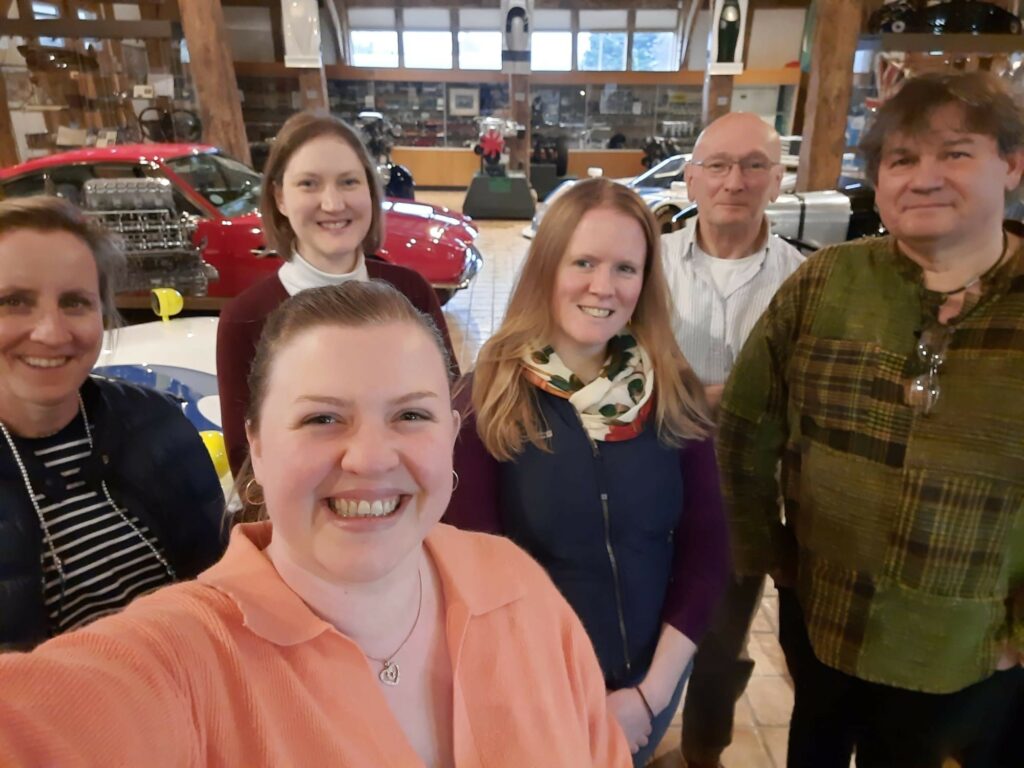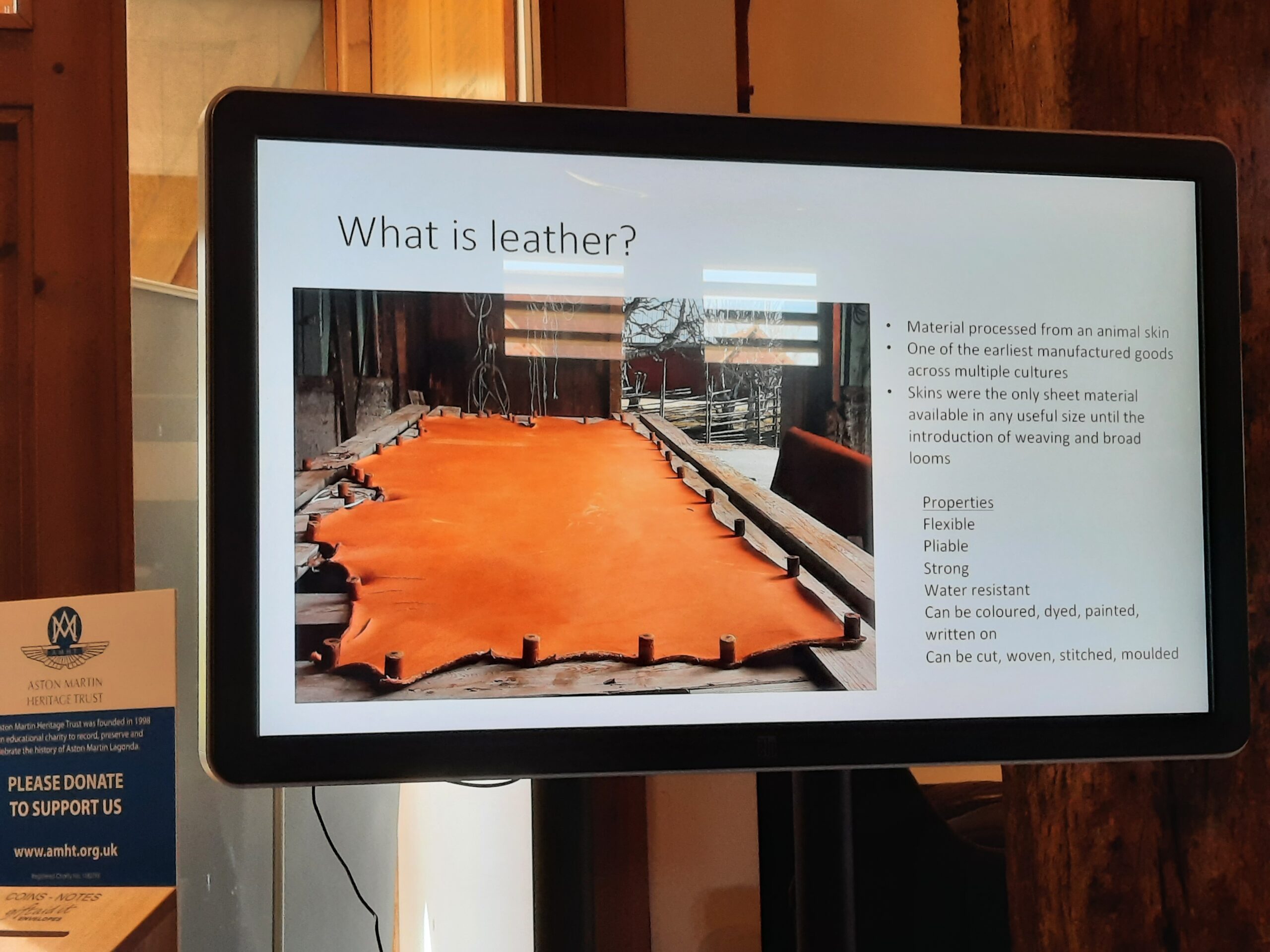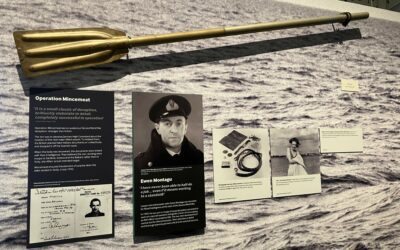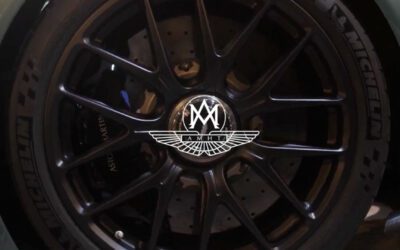Racing drivers of yester-year probably didn’t give a second thought to their leather goggles, gloves or shoes one day becoming part of a museum collection, and even less of a thought to how those items would be maintained decades later.
With such a varied collection of leather items at AMHT, from parts of vehicles to goggles and books, learning more about the material and how to care for it or treat it where needed is very much something we have been thinking about. So this month we had a team training day, an Introduction to Leather Conservation.

Delivered by Claire McQuillan of McQ Heritage Conservation and Chris Jones, a heritage engineer specialising in the preservation and restoration of historic vehicles and machinery, their knowledge and expertise applied to the collection made for an educational and interesting day.
Through a mixture of theoretical and practical sessions we covered the composition of leather, different tanning methods and the way leather has been used in vehicles, equipment and protective clothing over time. Some useful advice on degradation signs to look out for, how to clean and what to clean with are all valuable guidance which will help us care for a mixed and working collection such as ours.

The importance of accurate record keeping as part of conservation cleaning was also emphasised. Keeping good records is a core part of collections work generally, and by maintaining conservation cleaning records we are making sure we capture an item’s full story, and an ability to pass this knowledge on to those who comes after us.
Before the training I retrieved some items with a range of different leather related challenges. This included books with mouldy covers, a squashed leather bag, an apprentice stool on open display, and some crumbly goggles. Some of these are composite objects, where there is more than one material present, and this is something we also need to think about when caring for them.
We used smoke sponge to remove mould from the book covers, being very careful to not transfer that mould to other items, and had a group practice at making tissue puffs which could be used to gently pad out the leather bag to help reshape it.
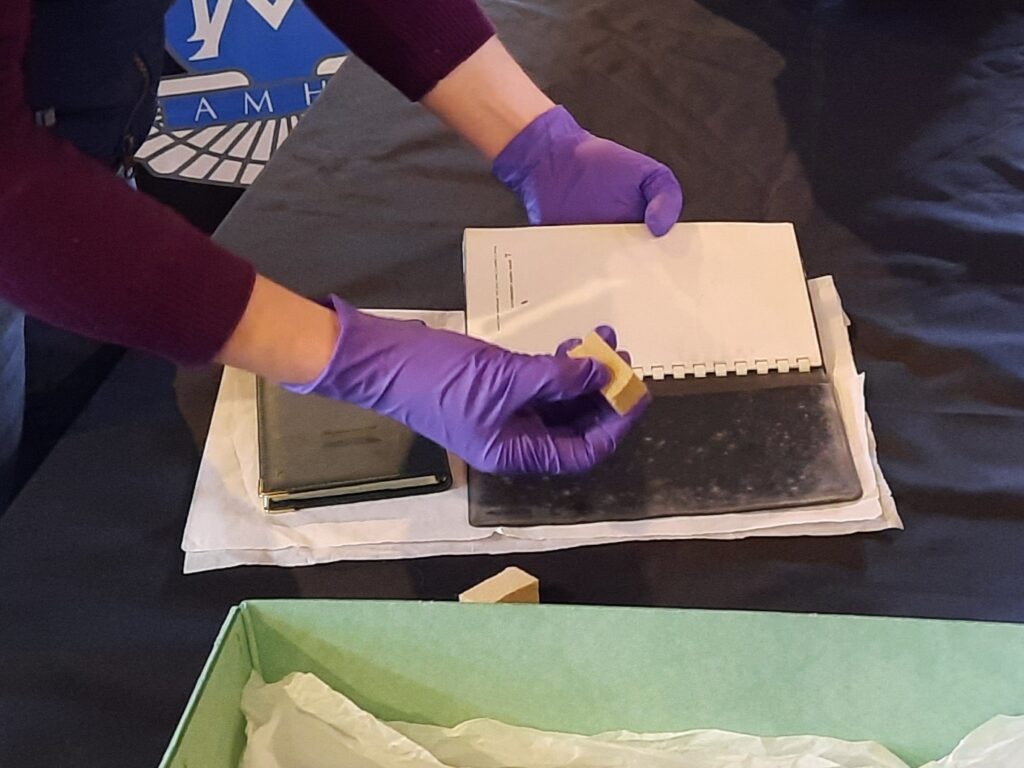
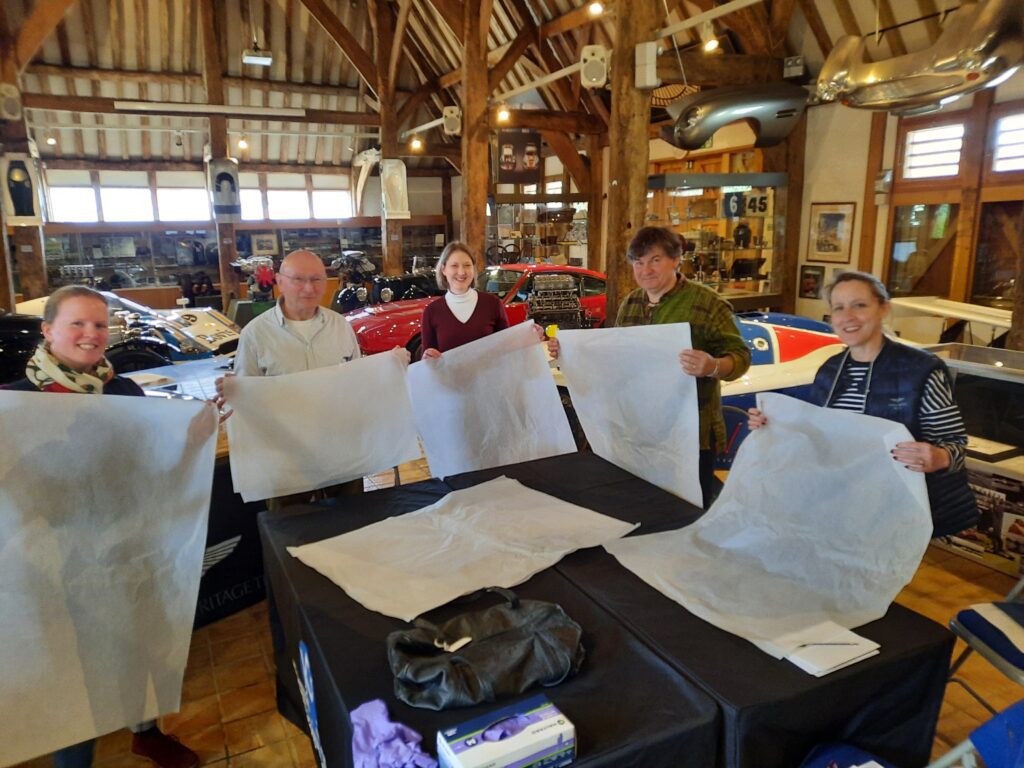
A tear on the apprentice stool nicely demonstrated the layers of leather, showing the smooth top layer of skin on the outer surface, and the furry collagen layer underneath – a good source of nutrition for pests, which, as you’ll know if you’ve read Who Ya Gonna Call, we want to avoid.

The goggles presented an interesting challenge. While they do have leather on them, it only makes up a small proportion of the object. At greater risk is the rubber around the eye glass, which has crumbled through light damage accrued from display. UV light has penetrated the rubber over a sustained period and caused change at a chemical level, resulting in what we now see. This has left them incredibly fragile and they are a noteworthy example of why it is important to be aware of light levels in display spaces.
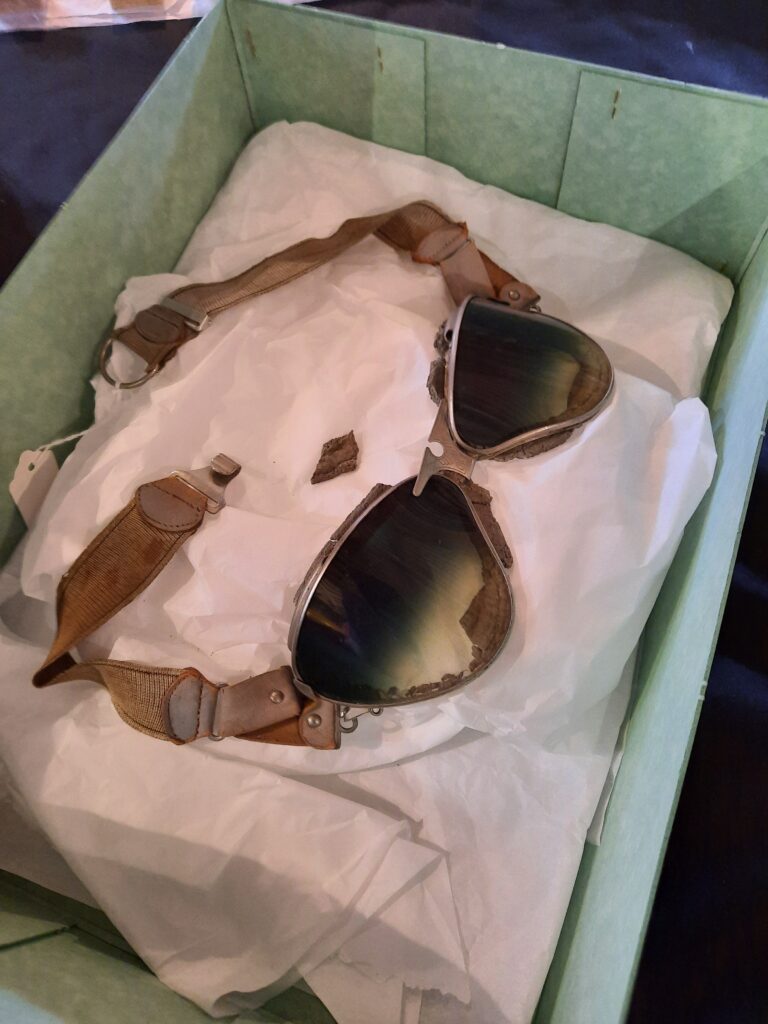
Next up, we moved on to the vehicle collection. From steering wheels to straps, seats to hidden leather under the bonnet, our vehicles are working objects as well as museum objects and so we have to find the balance between the two.
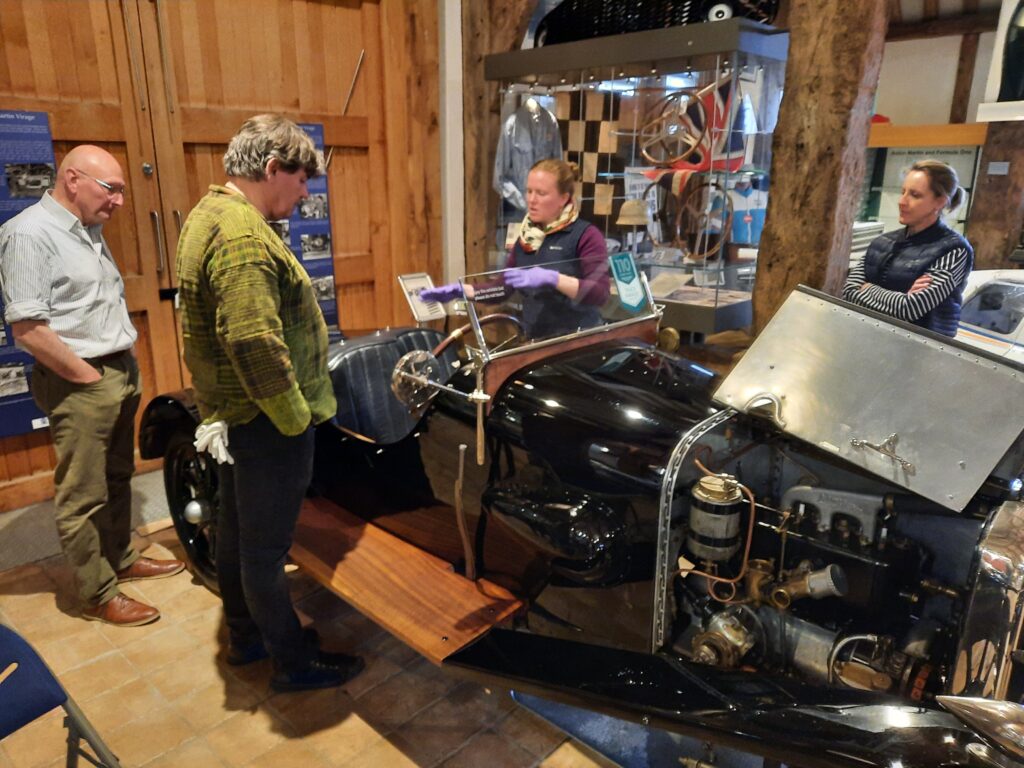
It’s important to be able to maintain the vehicles we care for as they were made and intended to be used. For those that run, kept static they lose their purpose and the essence of what they are, but we have to make sure our decision making is balanced and adapted to how they and their leather work are prepared for display, storage and events.
One of the takeaways from the day which stayed with us is, ‘don’t lick it’. A sage piece of advice given in all seriousness, it is not the way to test something and you very much should not lick mould, but I have a feeling it will be making us laugh for weeks to come.
